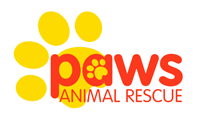Helping your dog adjust to people in face coverings
As we’re all getting used to the new way of living with Covid-19 and social distancing and wearing face coverings has become the norm, we’ve all had to adjust slightly in various different ways this past year. As for our dogs, they have had to adjust too. Whether it be from coping with our increased home time and then having to readjust to their humans being away during the day again with lockdown restrictions changing every couple of months or even just travel restrictions keeping their walking routes closer to home, they are having to learn and adjust with us.
With that in mind, one big thing we have noticed is how our dogs are adjusting to seeing people with face masks and coverings either on us or meeting new people out and about. For a lot of dogs, particularly rescue dogs, who may have some nervous or fearful dispositions, face masks make it hard for them to read our body language and facial expressions – something our domesticated dogs rely on quite a bit. Remember as well, that some face masks can muffle the sound of voices and make certain words your dog is used to sound different to them. For these reasons, we have put together some suggestions that will help your dog adjust to people wearing face coverings.
When your dog is first introduced to people in face masks, try have them in a familiar place where they are calm, like the kitchen, if they are used to it, would work once they are not too distracted. Start with the face mask in your hand and ask your dog to “sit”. Put the face mask on the floor or reach out with it still in your hand and allow your dog to investigate it a little. Spend some time playing or talking to your dog with lots of praise with the face mask still in your hand or on the ground. Once your dog seems comfortable and relaxed, then move onto the next step.
Start by holding the mask over your face for a second or two a few times and maintain talking to and praising your dog as normal. Once your dog seems comfortable with the mask in front of your face, ask them for a command that they are used to again like “sit” or “down”. When your dog carries out the command comfortably while the mask is over your face, give them a treat and lots of praise.
Once your dog seems comfortable with this step, build up the time where the mask is covering your face and wear it during a typical training session or while asking your dog to carry out typical behaviours that they are used to like “bed” or “get the ball”. This is to help them adjust to hearing the usual commands with a muffled voice. If your dog shows fear or discomfort with you wearing the mask at any time, try wearing the mask gradually or for shorter periods around your dog at a time to get them used to it. Once your dog is comfortable with you wearing the mask, you can introduce them to other people wearing it.
Try asking people your dog already knows to walk into the home wearing a mask but not to approach the dog and if your dog responds normally or greets them as usual, get them to praise your dog and give them a treat. If they behave anxiously or display discomfort, then take it back a step to just you wearing a mask to help them adjust. Or ask the person to cover their face gradually as you did and build it up step by step.
Once your dog is behaving comfortably around people in masks, you can introduce them to people in masks out and about. Be sure to give them lots of praise and treats when they react normally and comfortably when being introduced to people wearing face coverings each time. This will help show them that people in face masks in a normal setting is nothing to be afraid of. If they behave anxiously or scared around people in masks, it is important to not force them and to take it back a step to help make the adjustment as comfortable as possible for them.




